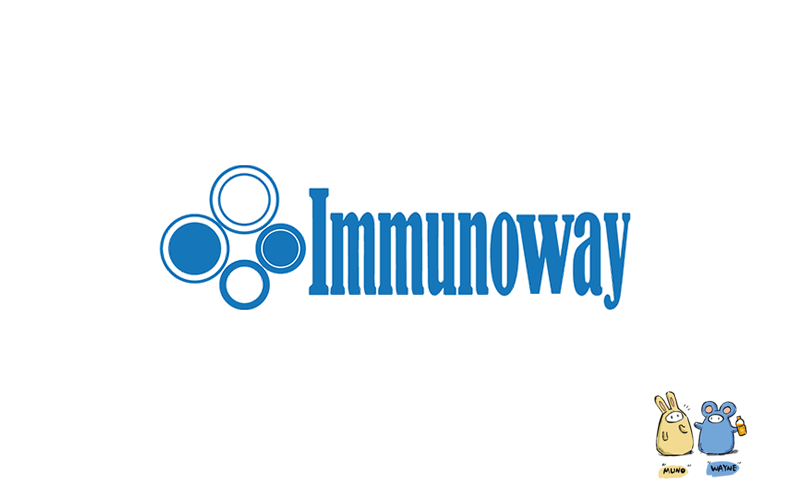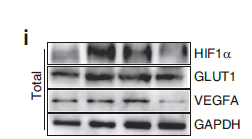
主要信息
Target
SCNAA
Host Species
Rabbit
Reactivity
Human, Rat, Mouse
Applications
WB, ELISA
MW
215kD (Observed)
Conjugate/Modification
Unmodified

货号: YN1330
规格
价格
货期
数量
200μL
¥3,780.00
现货
0
100μL
¥2,300.00
现货
0
40μL
¥960.00
现货
0
加入购物车


已收藏


收藏
详细信息
推荐稀释比
WB 1:500-2000; ELISA 1:5000-20000
组成
Liquid in PBS containing 50% glycerol, and 0.02% sodium azide.
特异性
SCNAA Polyclonal Antibody detects endogenous levels of protein.
纯化工艺
The antibody was affinity-purified from rabbit antiserum by affinity-chromatography using epitope-specific immunogen.
储存
-15°C to -25°C/1 year(Do not lower than -25°C)
浓度
1 mg/ml
实测条带
215kD
修饰
Unmodified
克隆性
Polyclonal
同种型
IgG
相关产品
抗原&靶点信息
免疫原:
Synthesized peptide derived from part region of human protein
展开内容
特异性:
SCNAA Polyclonal Antibody detects endogenous levels of protein.
展开内容
基因名称:
SCN10A
展开内容
蛋白名称:
Sodium channel protein type 10 subunit alpha (Peripheral nerve sodium channel 3) (PN3) (hPN3) (Sodium channel protein type X subunit alpha) (Voltage-gated sodium channel subunit alpha Nav1.8)
展开内容
背景:
The protein encoded by this gene is a tetrodotoxin-resistant voltage-gated sodium channel alpha subunit. The properties of the channel formed by the encoded transmembrane protein can be altered by interaction with different beta subunits. This protein may be involved in the onset of pain associated with peripheral neuropathy. Alternative splicing results in multiple transcript variants. [provided by RefSeq, Jun 2014],
展开内容
功能:
Domain:The sequence contains 4 internal repeats, each with 5 hydrophobic segments (S1,S2,S3,S5,S6) and one positively charged segment (S4). Segments S4 are probably the voltage-sensors and are characterized by a series of positively charged amino acids at every third position.,Function:This protein mediates the voltage-dependent sodium ion permeability of excitable membranes. Assuming opened or closed conformations in response to the voltage difference across the membrane, the protein forms a sodium-selective channel through which sodium ions may pass in accordance with their electrochemical gradient. It is a tetrodotoxin-resistant sodium channel isoform. Its electrophysiological properties vary depending on the type of the associated beta subunits (in vitro). Plays a role in neuropathic pain mechanisms.,PTM:Ubiquitinated by NEDD4L; which promotes its endocytosis.,similarity:Belongs to the sodium channel family.,similarity:Contains 1 IQ domain.,subcellular location:It can be translocated to the extracellular membrane through association with S100A10.,subunit:The voltage-resistant sodium channel consists of an ion conducting pore forming alpha-subunit regulated by one or more associated auxiliary subunits SCN1B, SCN2B and SCN3B. Found in a number of complexes with PRX, TCTEL1 and PDZD2. Interacts with proteins such as FSTL1, PRX, TCTEL1, PDZD2, S100A10 and many others (By similarity). Interacts with NEDD4 and NEDD4L.,tissue specificity:Expressed in the dorsal root ganglia and sciatic nerve.,
展开内容
细胞定位:
Cell membrane ; Multi-pass membrane protein . It can be translocated to the cell membrane through association with S100A10. .
展开内容
组织表达:
Expressed in the dorsal root ganglia and sciatic nerve.
展开内容
文献引用({{totalcount}})
货号: YN1330
规格
价格
货期
数量
200μL
¥3,780.00
现货
0
100μL
¥2,300.00
现货
0
40μL
¥960.00
现货
0
加入购物车


已收藏


收藏
Recently Viewed Products
Clear allToggle night Mode
{{pinfoXq.title || ''}}
Catalog: {{pinfoXq.catalog || ''}}
Filter:
All
{{item.name}}
{{pinfo.title}}
-{{pinfo.catalog}}
主要信息
Target
{{pinfo.target}}
Reactivity
{{pinfo.react}}
Applications
{{pinfo.applicat}}
Conjugate/Modification
{{pinfo.coupling}}/{{pinfo.modific}}
MW (kDa)
{{pinfo.mwcalc}}
Host Species
{{pinfo.hostspec}}
Isotype
{{pinfo.isotype}}
产品 {{index}}/{{pcount}}
上一个产品
下一个产品
{{pvTitle}}
滚轮缩放图片
{{pvDescr}}



















